Julian McKinnon – 7 October, 2012
It's no coincidence that the work invokes a swathe of literary and cultural reference; eight of these works are accompanied by small prints of book covers, which punctuate or syncopate an otherwise fairly staid install. With the placing of the prints, Watkins deliberately engages a reading of content through the lens of literature. The counter-cultural references are splashed about as liberally as the washes of paint.
“Tree let your naked arms fall
nor extend vain entreaties to the radiant ball.
This is no gallant monsoon’s flash,
no dashing trade wind’s blast.
The fading green of your magic
emanations shall not make pure again
these polluted skies … for this
is no ordinary sun.”
So reads Hone Tuwhare’s chilling and poignant poem No Ordinary Sun. Looking at Denys Watkins’ painting of the same title, a somewhat different tone comes to mind. It’s more the a-bomb Armageddon gallows humour conjured by Don DeLillo in Underworld, when he fictionally stages New York comedian Lenny Bruce performing a standup show during the Cuban Missile Crisis. The comic convulses with laughter as he repeatedly punctuates his routine with howls of: “We’re all gonna die!” The summoning of atomic annihilation, courtesy of Tuwhare, casts an intriguing light on the vibrantly colourful paintings at Bath Street Gallery - ostensibly a commercial art gallery in upmarket Parnell. We have arrived, tongues firmly in cheek, at the neon lit advanced capitalism apocalypse. Cue the Rolex-clad riders of doom in their late model Mercedes Benz executive sedans.
Lost in Space is comprised of a dozen acrylic paintings. The title itself comes from the 60’s sci-fi series - kitsch retro-futurism at its finest. That, with a few other clues, presents us with a reading that could be called ‘chronologically warped sci-fi humour under the shadow of the bomb.’ There are circles everywhere like wheels or planets (could that one even be a record?); amoeba-like shapes swimming in deft washes of colour; structural lines threading through the images in an echo of cityscape; a drop shadow or two to break up the otherwise flat non-perspective of the picture plane; sharp lines against irregular contours; and a recurring pictorial motif of a bone.
The bone, it turns out, is that of a Moa. Taken from photos at Auckland museum, Watkins used the bone to invoke the opening scene of 2001: A Space Odyssey. It’s effective; that most compelling of cinematic moments - sunrise over shiny black monolith followed by ape smashing bones to Strauss fanfare- readily springs to mind when viewing these works. As does all manner of other associations: beat poetry, Zen, psychedelia, surf-guitar.
It’s no coincidence that the work invokes this swathe of literary and cultural reference; eight of these works are accompanied by small prints of book covers, which punctuate or syncopate an otherwise fairly staid install. With the placing of the prints, Watkins deliberately engages a reading of content through the lens of literature. The counter-cultural references are splashed about as liberally as the washes of paint: Lawrence Ferlinghetti, Gary Snyder, Alan Watts, Buckminster Fuller - a virtual ‘who’s who?’ of 60’s alternative thinking. These books have been a part of Watkins’ personal library since his days as an undergraduate in 1960’s London (where he saw Jimi Hendrix play live on four occasions. Four!)
The works themselves don’t read entirely as figurative or abstract; they operate in the space between - territory Watkins has trekked extensively. Many of the works follow a similar composition, a central totemic form or structure with a t-cross at the top formed by moa bone, mushroom cloud, or other pictorial device. This seemed frustrating to begin with, though with a cue from the prints (In particular This is It by Alan Watts, “LSD and Satori, Beat Zen, Square Zen, and Zen…” reeled off like a list of 1950’s dance steps) the repetition of form starts to read as some kind of hallucinatory monastic meditation. Wisdom and Misconduct, the most reductive work in the exhibition, is perhaps where this process hit its peak.
There are thick planes of colour sometimes interspersed with something akin to an urban structural montage. Bright yellows, fleshy pinks, shocks of orange, and oxide reds are all interwoven seamlessly. Pencil lines of the underlying layout are revealed to give a glimpse of the artists’ process. It is however the use of washes, some thin enough to let the weave of linen peak through, that demonstrate Watkins’ consummate abilities as a painter (though with Anthropoda we see even a maestro has the capacity to overwork). Philip Guston might just have come up with these works if he’d stepped from 1960’s Woodstock to 2012 LA and someone had given him a Moa bone.
An ode to the fading light that was ‘sixties counter-cultural revolutionary zeal; homage to great moments in cinema, painting, and literature; a lament to humankind’s capacity to destroy itself. These works are complex, nuanced, touching on solemn subject matter and yet light-hearted. In Lost in Space, Watkins takes cold-war existential angst and beat-generation anti-authoritarianism on holiday to present day California - where, with acrylic paint in colours they didn’t even know existed, they have a really good time.
If this is the apocalypse then it’s a hell of a party.
Julian McKinnon
Recent Comments
Roger Boyce
This Here's a public declaration of love...previously expressed in private. Tone-poem-whistle while strolling through a springtime blossomed graveyard. Bravo. PS ...


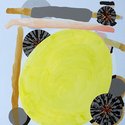
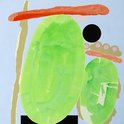
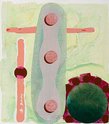
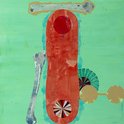



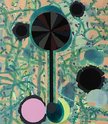


 Two Rooms presents a program of residencies and projects
Two Rooms presents a program of residencies and projects Advertising in this column
Advertising in this column



This Discussion has 1 comment.
Comment
Roger Boyce, 8:27 a.m. 11 October, 2012 #
This Here's a public declaration of love...previously expressed in private.
Tone-poem-whistle while strolling through a springtime blossomed graveyard.
Bravo.
PS The Hone Tuwhare is apropos
Participate
Register to Participate.
Sign in
Sign in to an existing account.